I’m excited to share 3 tips for purposeful lettering practice. Life is busy and when it comes to learning lettering, practice must be a priority. Hey there, again, lovelies! It’s Lauren of @renmadecalligraphy and I’m excited to share some advice on how to make lettering practice a priority without sacrificing too much of your time and routine. Whether you are learning lettering to start your own side business or creating letters for relaxation and fun, it’s important to practice with purpose and consistency.
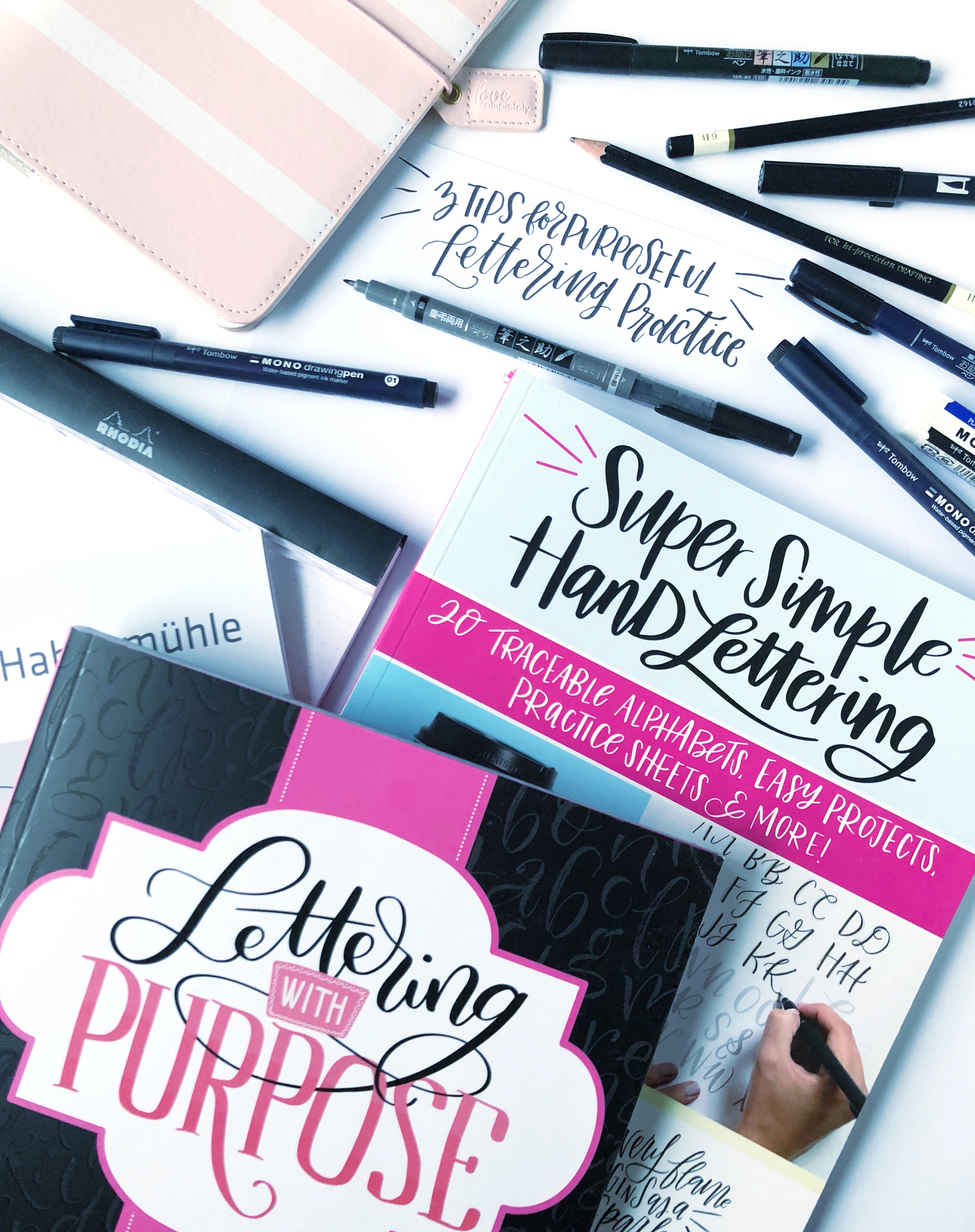
FIRST, YOU’LL NEED:
Lettering Tools:
- Tombow MONO Drawing Pen
- Tombow MONO Drawing Pencil
- Tombow Fudenosuke Hard Tip Brush Pen
- Tombow Fudenosuke Soft Tip Brush Pen
- Tombow Fudenosuke Twin Tip Brush Pen
- Tombow Dual Brush Pen
Smooth Paper:
- Hahnemuele Lettering Block
- Rhodia Dot Pad
Learning Resources:
- Lettering with Purpose by Brittany Luiz
- Super Simple Hand Lettering by Kiley Bennett
- Brit and Co Lettering Classes
TIP 1: CHOOSE THE RIGHT TOOL
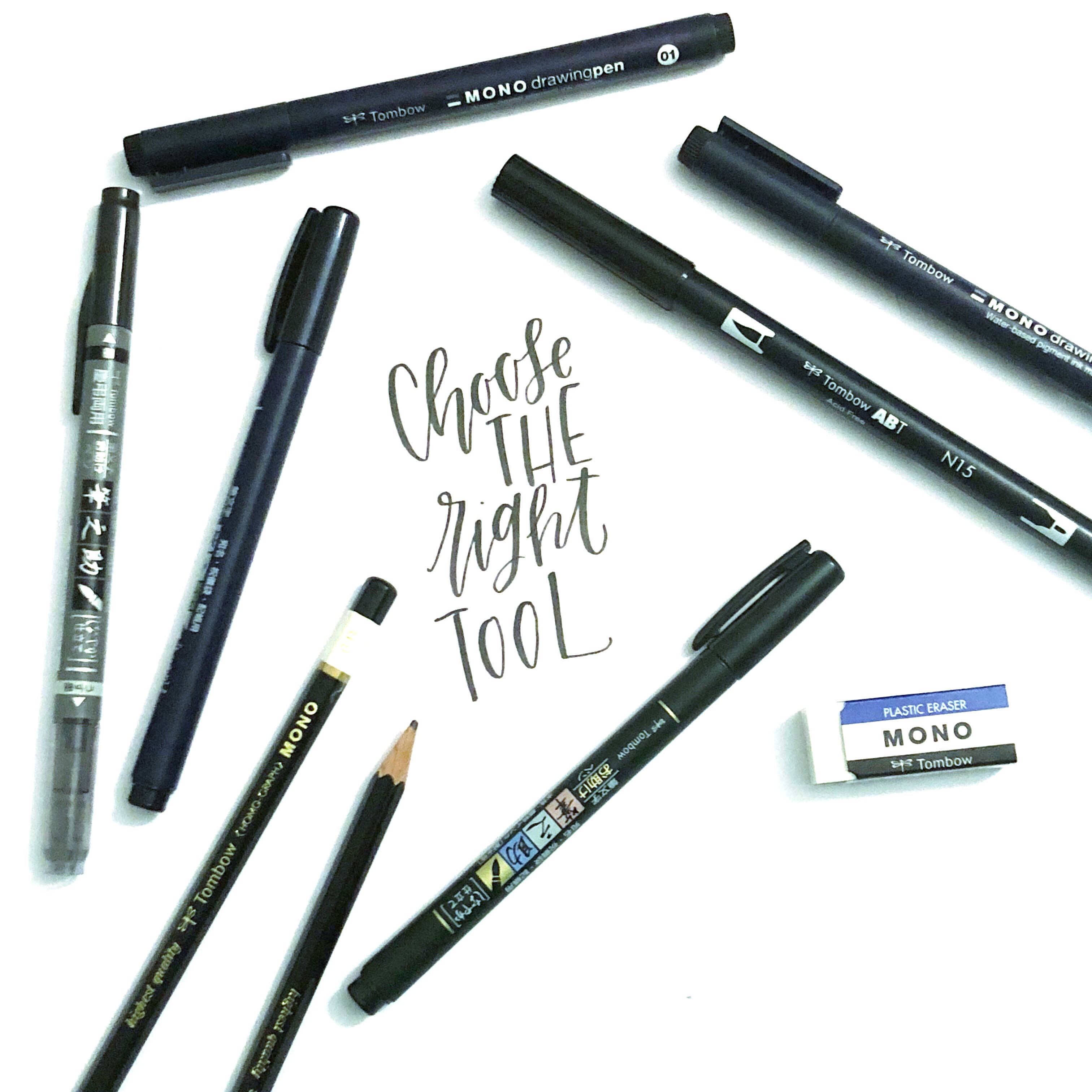
Lettering is a broad topic and with so many different kinds of lettering tools, it’s important to know what tool to use for practicing specific lettering skills. To practice with purpose, you first need to know where you are in your lettering skills and what you are needing to work on the most. Different tools are better for practicing specific skills and techniques with brush lettering.
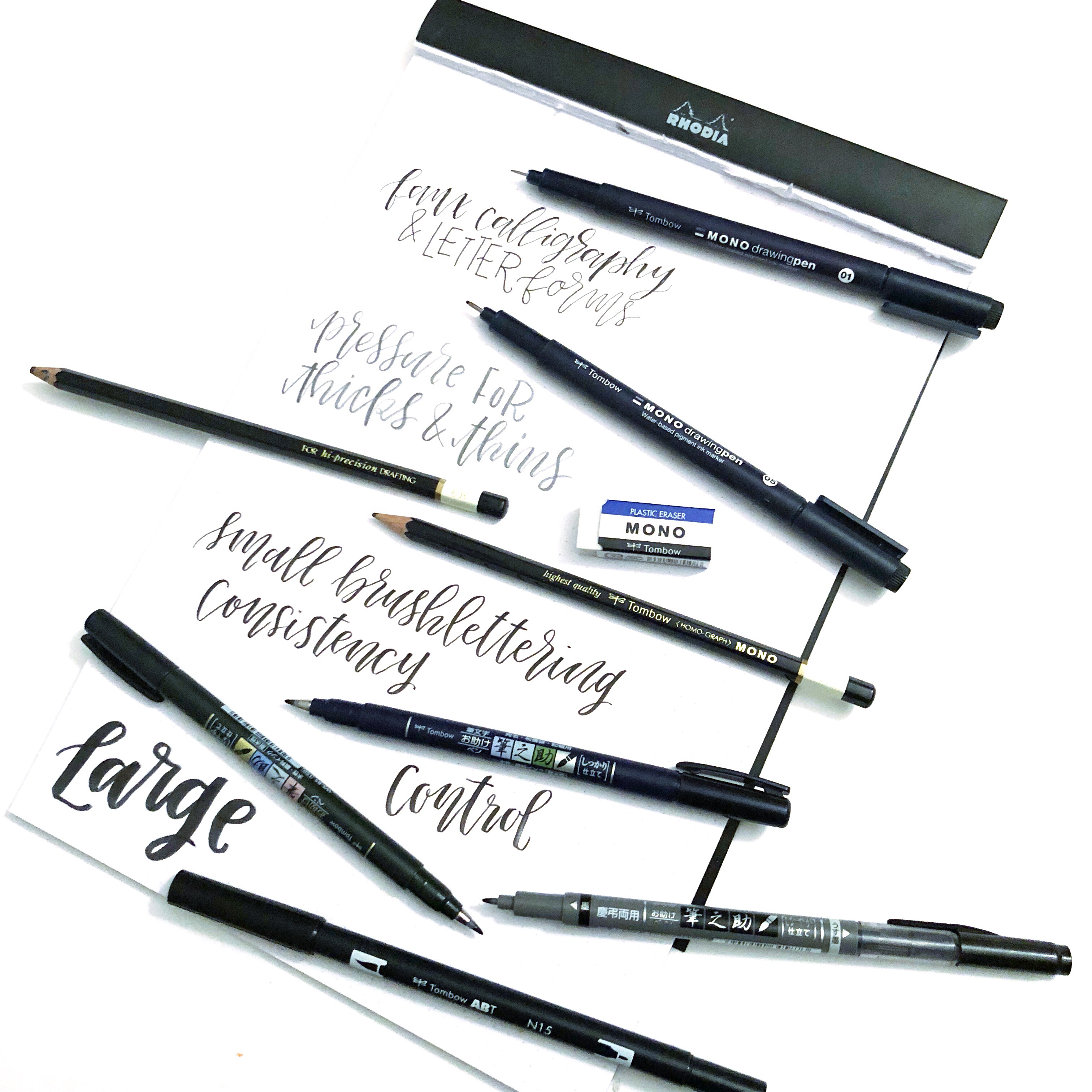
For faux calligraphy and practicing different letter forms, the MONO Drawing Pen is perfect, especially for beginners who are just getting the feel for lettering.
Pressure is always a big skill that needs plenty of practice when using brush pens to create thick downstrokes and thin upstrokes. The MONO Drawing Pencil in 6B is my favorite for practicing how to add pressure for thicks and release pressure for thins. The pencil is so much easier to control than a brush pen. Once pressure is mastered with a pencil, the transition to a small brush pen is so much easier.
As you transition into learning how to use smaller brush pens, strokes can be shaky and letter forms also have to be practiced for consistency. The Fudenosuke Hard Tip Brush Pen is perfect for creating brush calligraphy and practicing consistent strokes and letter forms. The hard tip is easier to control than other more flexible tipped brush pens. The Fudenosuke Soft Tip and Twin Tip Brush Pens are more flexible and great for practicing control, which is definitely needed when using larger brush pens.
The Dual Brush Pen is a popular lettering tool that people often try to learn how to use before trying any other tool. It is actually the most difficult to use and it’s important to master letter forms, pressure, consistency, and control with a variety of easier tools before picking up a Dual Brush Pen for lettering practice. It’s also very important to use smooth paper so that the brush tips don’t fray while learning how to use the pen correctly.
Once you have learned each of the tools and understand the skills you need the most practice with, you are ready to learn and challenge yourself to grow as a letterer.
TIP 2: LEARN AND CHALLENGE YOURSELF
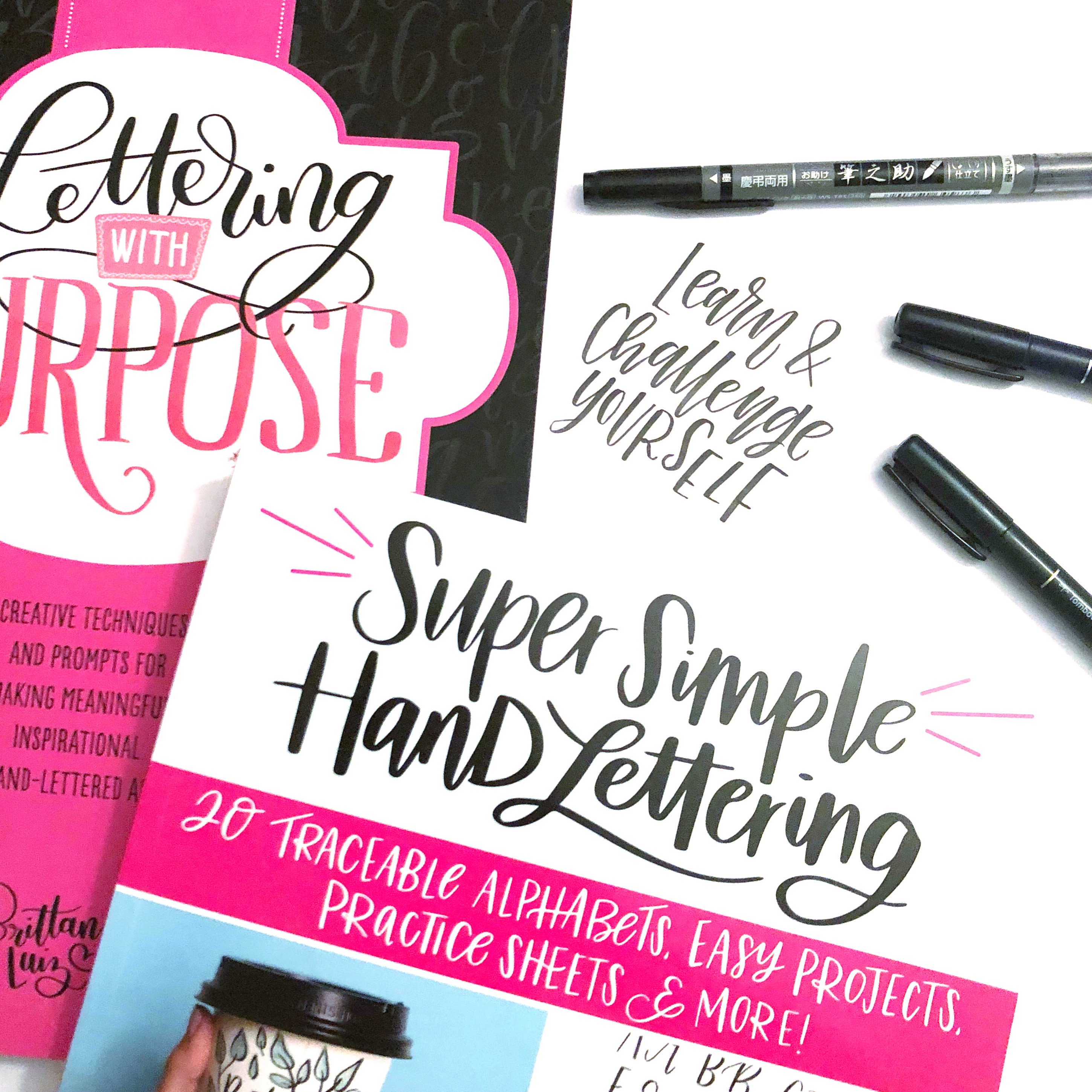
Another key to practicing with purpose is finding the right resources to challenge yourself to practice this hobby with the right tools and inspiration. There is inspiration everywhere, especially in lettering books. Find a book that has styles and projects that make sense with your personality and provide support in practice through prompts or challenges.
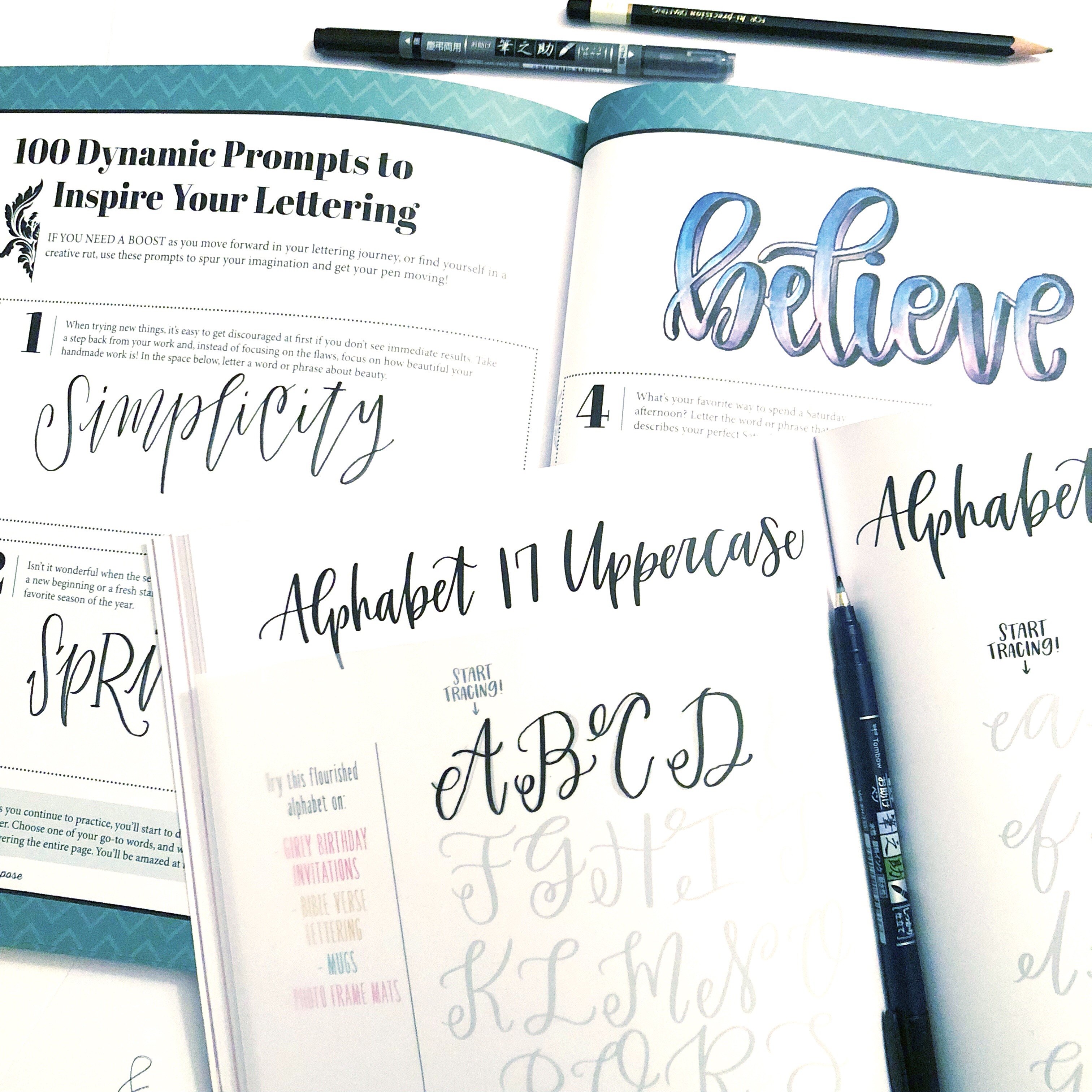
If you need a suggestion of the best books for practicing, I have found two that are perfect! Brittany Luiz’s Lettering with Purpose provides lots of lettering instruction and provides 100 prompts to inspire your lettering and provide a place for purposeful practice. Super Simple Hand Lettering by Kiley Bennett is also a great practice workbook, because there are tons of sample alphabets and it even comes with tracing paper to go over the letter forms, allowing the book to be used over and over again. I also love how both books have lots of projects, which are a great way to practice while accomplishing a task.
Push yourself out of the book and start sharing your work, whether it be with your best friend or on your Instagram account. Challenge yourself to share and grow as you practice. Practice makes progress so practice often and embrace every tiny victory along the way. Lettering classes are also a great way to conveniently practice and be inspired right from your home computer.
TIP 3: LETTER EVERY DAY
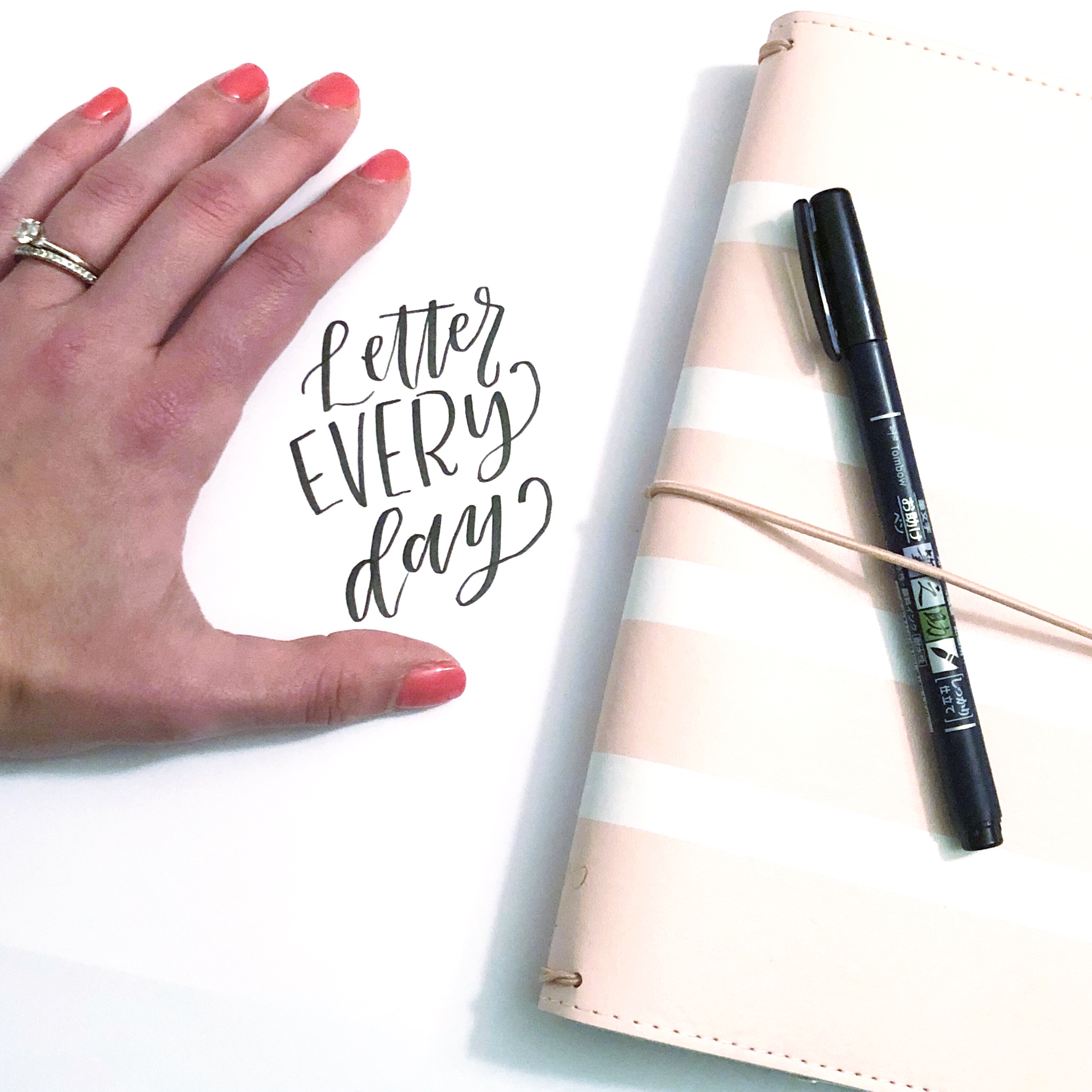
The final key for creating lettering and practicing intentionally, is making sure that you do so every single day. It can be very difficult to fit in extra time for practice during the day so look for ways to infuse utilizing your lettering skills for practice within your everyday life. It may be as a simple as writing a grocery list, jotting dates down in your planner, or addressing envelopes. Make sure that you are using your lettering skills to enhance activities that you already do everyday.
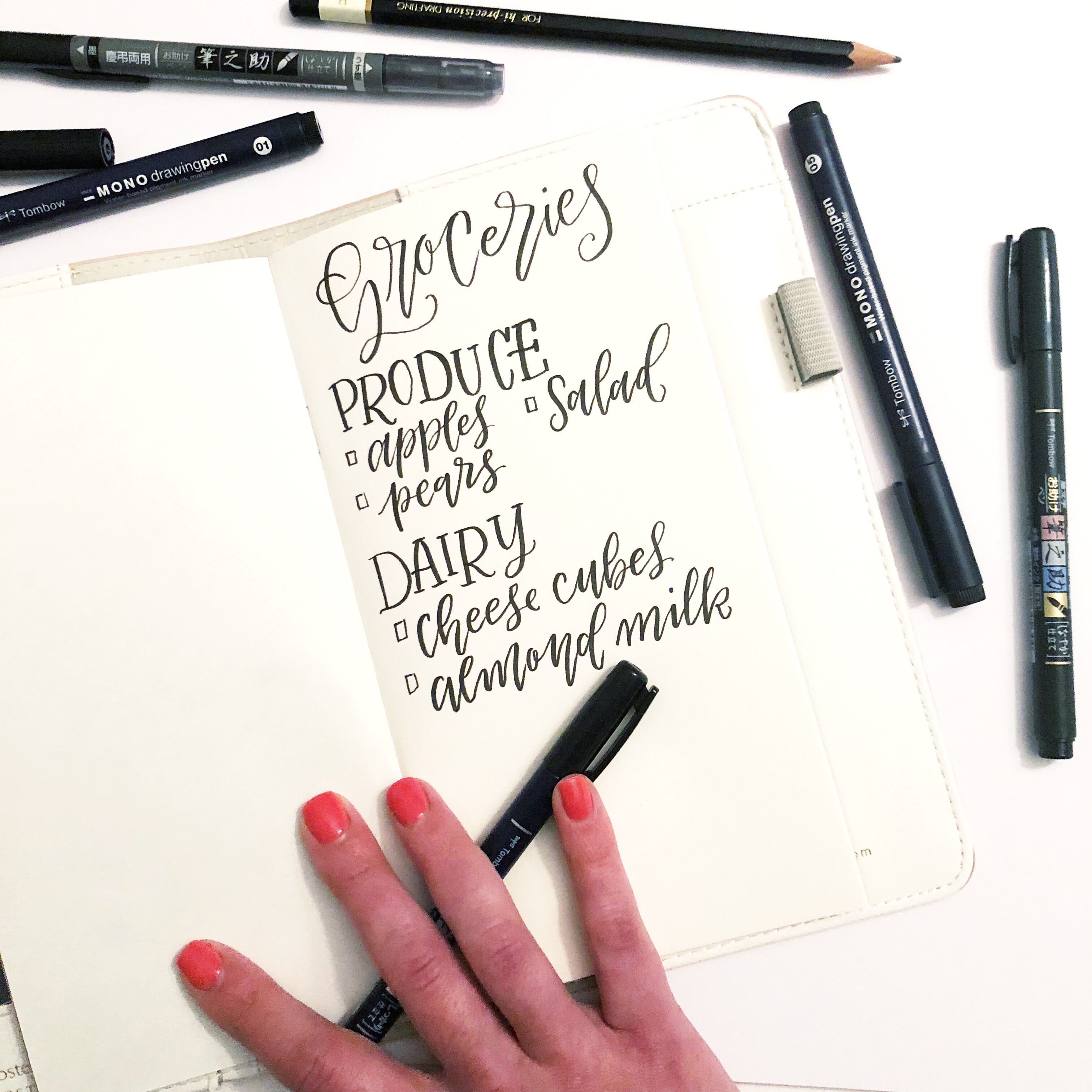
Integrating lettering into your every day routine makes it enhance your life rather than having to be a completely separate add on. There are limitless ways that you can work in lettering practice daily, but the important part is staying dedicated and focused throughout the process.
PRACTICE YOUR WAY!
No matter how you practice, what skills you focus on, and where you are in your lettering journey, intentional and purposeful practice will help you find your niche and style as a letterer. Practice the way you want and fit it in wherever it makes sense. You’ll be so excited and shocked at how quickly you will grow and improve creatively and skillfully.
For more tips and tricks, go on over to my instagram @renmadecalligraphy or my blog at renmadecalligraphy.com. You can find all of these amazing Tombow supplies at TombowUSA.com.
Happy Practicing!
Lauren
I am interested in learning hand lettering. I prefer a spiral bound book of practice sheets. I am left handed.
Pingback: Building Lettering Confidence with Tombow and Tracing Paper - Tombow USA Blog
Lettering is a skill that can be learned, but it will take time and practice. The purpose of this article is to help you get started with lettering by providing some simple techniques and examples to help you along the way